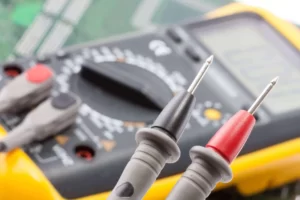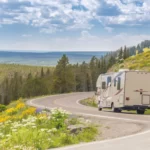On any vehicle, the braking system is incredibly important when it comes to function and safety, but the bigger the vehicle, the bigger the concern. And if you are driving it on windy roads up in the mountains, you can multiply that concern several times over. This is something every responsible RV driver knows.
Does this mean you need to avoid driving mountain roads in your RV? Not at all. But there are certain things you should do to make sure you are not harming your braking system as you go. Below are our tips for keeping your brakes in good shape when driving your RV in the mountains.
Take it Slow and Steady
When driving an RV over mountain roads, it is a tortoise and the hare situation: slow and steady wins the race. This is especially true if driving over mountain roads is new to you. Our advice is to let go of having a timeframe for arrival and instead enjoy the journey. You will get there when you get there, as long as you are driving safely.
Select the Right Speed
On mountain roads, there will be speed limits, just as on any other roads. However, you will also often see a posted maximum safe speed. You should always stick to the speed limit or below, even if the maximum safe speed is higher than the speed limit. This maximum safe speed is generally geared towards smaller vehicles; larger vehicles should go slower.
The best speed for your RV might very well be lower than the speed limit. You need to consider the weight of your vehicle plus cargo, the length and steepness of the grade, the road and weather conditions, and what you are comfortable with.
Use Engine Braking
Engine braking is a vital technique for anyone driving a manual vehicle, but especially for those driving larger vehicles. This is a technique used by long-haul truck drivers to reduce their speed while saving their brakes some of the effort.
The concept is fairly simple: you shift into a lower gear to help the vehicle slow down while letting up on the gas. You apply the brakes as needed, but the engine helps to take much of the work off of them.
Which gear should you shift into for engine braking? It is recommended that you use the same gear you used to climb the grade, shifting into this gear before you start down the grade. If you used third to climb the grade, use third when going down the grade as well. However, newer RVs may need a lower gear when descending than when ascending. If you are unsure, ask before you go. It is important that you never downshift once you are already picking up speed, as this can be dangerous.
Recommended Braking Technique
Once you have your RV in the correct low gear, you can use the recommended braking technique when needed, which we have outlined below.
- If your RV goes above your safe speed, apply the brakes as hard as needed to feel clear reduction in speed.
- Continue to apply the brakes until your speedometer shows you are traveling at about 5 mph slower than your maximum safe speed.
- Monitor your speed carefully, and if you reach or exceed your safe speed, apply the brakes again as before, once again aiming for 5mph below your maximum safe speed.
If ever you have questions about your RV, Farace RV is here to help you. Stop in or give us a call.








